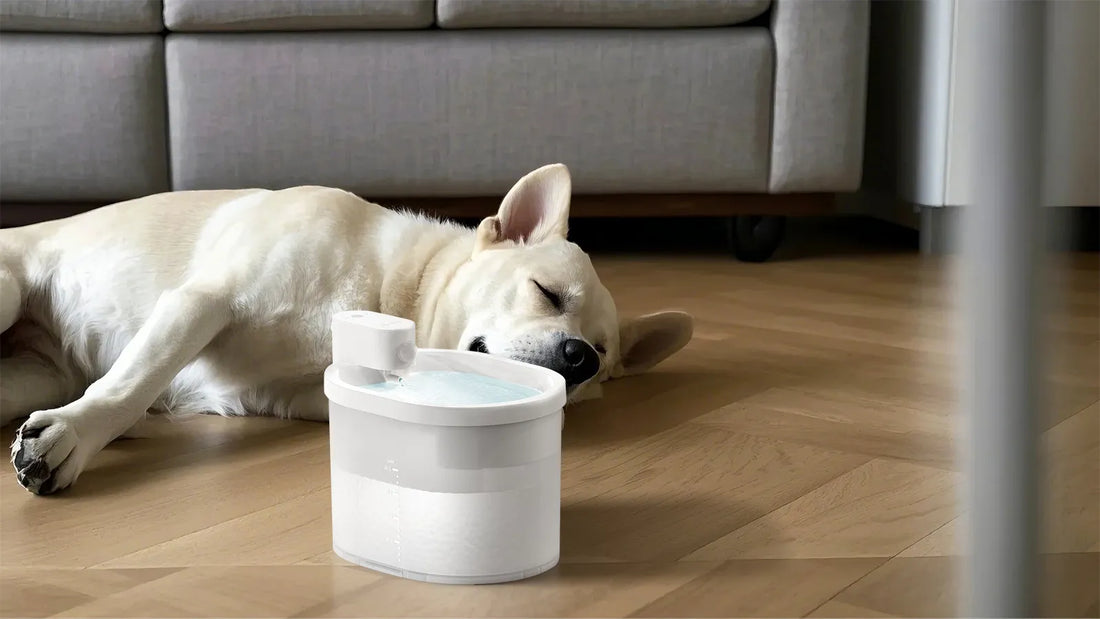If you're a cat owner, you know how important it is to keep your furry friend hydrated. A cat water fountain can be a great solution, but what happens when it becomes moldy? A moldy cat water fountain is not just unsightly—it can pose serious health risks to your pet. In this article, we'll explore the dangers of mold, how to prevent it, and the best ways to clean your cat's water fountain to keep it safe and functional.
Why Mold in a Cat Water Fountain is Dangerous
Mold thrives in damp, dark environments, making a cat water fountain an ideal breeding ground. When mold grows in your pet's water source, it can release spores and toxins that are harmful to both cats and humans. Cats are particularly vulnerable because they have smaller bodies and can be more sensitive to toxins. Ingesting mold-contaminated water can lead to respiratory issues, digestive problems, and even long-term health complications.
Signs Your Cat Water Fountain Has Mold
Identifying mold early is crucial to preventing health risks. Here are some common signs to look for:
- A musty or unpleasant odor coming from the fountain
- Visible black, green, or white spots on the fountain's surface
- Cloudy or discolored water
- Your cat showing reluctance to drink from the fountain
If you notice any of these signs, it's time to take action immediately.
How to Prevent Mold in Your Cat's Water Fountain
Prevention is always better than cure. Here are some practical tips to keep your cat's water fountain mold-free:
- Clean Regularly: Wash the fountain at least once a week with mild soap and warm water. Disassemble all parts to ensure thorough cleaning.
- Use Fresh Water: Replace the water daily to prevent stagnation, which encourages mold growth.
- Choose the Right Location: Place the fountain in a well-ventilated area away from direct sunlight, as heat can promote mold growth.
- Inspect Filters: Replace filters as recommended by the manufacturer to ensure proper filtration and prevent mold buildup.
- Consider a Fountain with Antimicrobial Features: Some fountains are designed with materials that resist mold and bacteria growth.
How to Clean a Moldy Cat Water Fountain
If your cat's water fountain has already developed mold, don't panic. Follow these steps to clean it safely and effectively:
- Disassemble the Fountain: Take apart all components, including the pump, filter, and water basin.
- Soak in Vinegar Solution: Mix equal parts white vinegar and water in a large bowl. Soak the parts for 30 minutes to kill mold and bacteria.
- Scrub Thoroughly: Use a soft brush or sponge to scrub away any visible mold. Pay special attention to crevices and hard-to-reach areas.
- Rinse Well: Rinse all parts thoroughly with clean water to remove any vinegar residue.
- Dry Completely: Allow all components to air dry completely before reassembling the fountain.
- Run a Test Cycle: Fill the fountain with fresh water and run it for a few minutes to ensure it's clean and functioning properly.
Alternative Cleaning Solutions
If you prefer not to use vinegar, there are other safe cleaning solutions:
- Baking Soda: Create a paste with baking soda and water to scrub away mold.
- Hydrogen Peroxide: Use a 3% hydrogen peroxide solution to disinfect the fountain.
- Mild Dish Soap: A gentle soap can be effective for regular cleaning, but avoid harsh chemicals that could harm your pet.
When to Replace Your Cat Water Fountain
Even with regular cleaning, there may come a time when your cat's water fountain needs to be replaced. If you notice persistent mold growth, cracks, or damage to the fountain, it's best to invest in a new one. A compromised fountain can harbor bacteria and mold, making it unsafe for your pet.
The Importance of Hydration for Cats
Keeping your cat hydrated is essential for their overall health. Cats are naturally prone to dehydration, especially if they primarily eat dry food. A clean, mold-free water fountain encourages your cat to drink more water, supporting their kidney function, digestion, and overall well-being.
Don't let a moldy cat water fountain compromise your pet's health. By following these prevention and cleaning tips, you can ensure your cat stays hydrated and happy. Remember, a little effort goes a long way in keeping your furry friend safe and healthy. Take action today to protect your pet from the dangers of mold and enjoy peace of mind knowing their water source is clean and fresh.

![[🎃Halloween Sale]UAHPET Stainless Steel Self-Cleaning Cat Litter Box](http://www.uahpet.com/cdn/shop/files/1-cat-litter-box.jpg?v=1761890851&width=1600)












